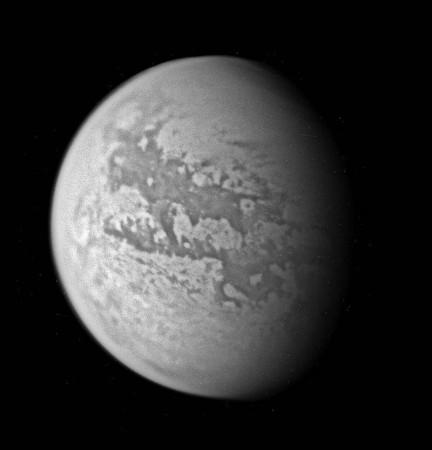
NASA's Cassini spacecraft is going to make its final flyby of Saturn's largest moon, Titan, next month. It will be the 126th pass made by the spacecraft.
Also Read: Mother refuses to breastfeed "alien" baby born in Bihar, India [VIDEO]
Cassini will help scientists by providing them with images of the geologically active world of Titan, comprising liquid hydrocarbon lakes, and perhaps even salty oceans, hidden under its kilometres-thick icy surface.
Titan is the only moon — and object apart from Earth — in the Sol system that has a thick nitrogen-rich atmosphere.
The Mercury-sized moon features lakes that receive hydrocarbon rain, composed of liquid ethane and methane, which are considered the building blocks of life.
Presently, the biggest mystery surrounding Titan is whether it harbours life, or not.
"The combination of organics and liquid, in the form of water in a subsurface ocean and methane/ethane in the surface lakes and seas, means that Titan may be the ideal place in the solar system to test ideas about habitability, prebiotic chemistry, and the ubiquity and diversity of life in the universe," Sarah Hörst, a planetary science researcher with Johns Hopkins University in Baltimore, said in a statement that will be published in the upcoming edition of the Journal of Geophysical Research.
Titan is the biggest of the 53 named moons of gas giant Saturn. The moon's surface and atmosphere contains elements like oxygen, carbon, hydrogen, nitrogen, sulfur, and phosphorous along with hydrocarbons in abundant quantities.
According to NASA's 2015 Astrobiology Strategy report, "Scientists consider the moon's ever-present haze to be an analog for the prebiotic organic chemical environment [remniscent] of early Earth".

















